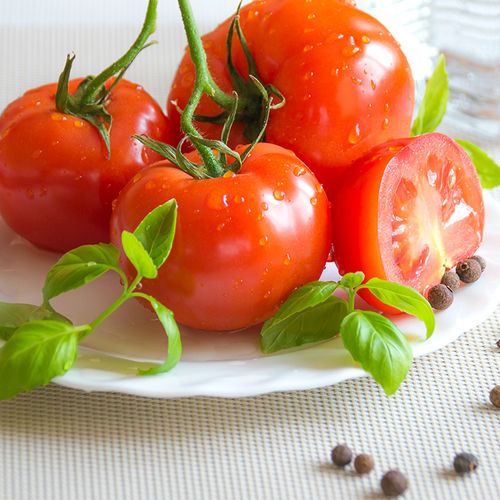Until recently, most nutrition research has focused on the health benefits of individual nutrients. For example, it's well-established that vitamin A is good for the eyes...calcium builds stronger bones...and zinc boosts immunity.
Now there is strong scientific evidence that nutrition is much more complex than that. When certain foods are combined, their nutritional value is much greater than when the foods are eaten individually.
That's why dietitians recommend eating a varied diet with plenty of fruits, vegetables, whole grains and low-fat proteins-the greater the variety, the better your chances of maximizing the health benefits of your food.
Latest development: Scientists are beginning to understand exactly which specific food combinations are the most effective in helping the body fight common ailments.
For example…
To Fight Arthritis
- Combine carotenes and spices. Carotenes are a group of powerful antioxidants that attack toxic, cell-damaging molecules known as free radicals.
In addition to beta-carotene, there are other carotenes, including beta-cryptoxanthin, which has been shown to fight rheumatoid arthritis and osteoarthritis.
Good sources of both beta-carotene and beta-cryptoxanthin: Winter squash (especially butternut), pumpkin, red bell peppers and carrots...apricots and watermelon.
The spices turmeric (with its antioxidant oil curcumin) and ginger contain phytochemicals that help suppress inflammatory reactions that can lead to arthritis. Turmeric is the bright yellow, dried spice found in curry powder. Ginger is available in powdered form as a spice and also as a fresh root.
My favorite arthritis-fighting combos: Curried butternut squash soup...pumpkin-ginger muffins...Asian ginger stir-fry with red bell peppers...and curried carrots.
To Fight Heart Problems
- Combine lycopene and monounsaturated fats. Lycopene is a fat-soluble antioxidant that has been shown to reduce the risk for heart disease, perhaps by stopping the process that leads to atherosclerosis (fatty buildup in the arteries).
Good sources of lycopene: Tomatoes, red and pink grapefruit, watermelon and guava.
Helpful: Eat cooked tomatoes—they contain three to four times more lycopene than raw tomatoes.
Monounsaturated fats are believed to protect against heart disease and have a number of cardiovascular benefits. These healthful fats help the body absorb all fat-soluble nutrients, including lycopene.
Good sources of monounsaturated fats: Olive oil and canola oil...avocado...almonds, walnuts, peanuts and cashews.
My favorite heart healthy combos: Roasted tomatoes with a touch of olive oil.. any meal made with homemade or store-bought tomato sauce that contains olive oil...a salad of grapefruit and avocado...and turkey, avocado and tomato sandwiches.
To Fight Memory Loss
- Combine folic acid and anthocyanins. One of the B vitamins, folic acid (also known as folate) helps lower blood levels of the amino acid homocysteine-a process that research suggests may promote blood flow to the brain. Folic acid also enhances communication between brain chemicals known as neurotransmitters.
Good sources of folic acid: Fortified whole-grain breakfast cereals and oatmeal.. green, leafy vegetables, bok choy and broccoli...oranges (or orange juice) and berries (such as strawberries and blackberries).
Anthocyanins are antioxidant phytochemicals that have been shown to not only help prevent memory loss but also improve failing memory
Good sources of anthocyanins: Berries (especially blueberries--their antioxidant flavonols help protect against brain degeneration), red or black grapes...red or purple cabbage, beets, red onions and eggplant.
My favorite memory-enhancing combos: Folic acid-fortified breakfast cereal with berries...coleslaw with red cabbage and bok choy ...chicken-vegetable stir-fry with red onions and broccoli.. and fruit salad with oranges and blueberries.
To Fight Fatigue
- Combine iron and vitamin C. Iron helps red blood cells carry oxygen throughout the body. Without enough iron, your cells can become starved for oxygen. This can lead to anemia, which causes listlessness, headache, irritability and general lack of energy.
Good sources of iron: Lean beef, turkey, chicken, lamb and pork...clams, oysters and shrimp...soybeans, chickpeas and lentils...spinach, asparagus and green, leafy vegetables.
Vitamin C is a powerful antioxidant, but most people don't realize that it can help fight fatigue brought on by iron-deficiency anemia by enhancing the body's ability to absorb iron.
By adding a food that contains significant amounts of vitamin C to a meal with an iron-rich food, your body will absorb up to three times more iron.
This is especially important for vegetarians, premenopausal women (who lose iron through menstruation) and people with a genetic predisposition to anemia (determined through blood tests).
Caution: People with hemochromatosis, a dangerous disorder that causes iron to build up in the blood, should not combine foods high in iron and vitamin C.
Good sources of vitamin C: Bell and hot chili peppers, broccoli and kale...tomatoes, mangoes, oranges or orange juice), strawberries and pineapple.
My favorite fatigue-fighting combos: Spinach salad with mandarin oranges...bean chili (such as kidney, pinto or black bean) with crushed tomatoes...steak with sautéed broccoli.. and chicken cacciatore with tomatoes and peppers.
To Fight Mood Swings
- Combine soluble fiber and protein. Mood swings often are caused by fluctuations in blood sugar glucose).
Low-quality carbohydrates, such as white rice, white bread, cakes and soft drinks, cause blood sugar spikes that can lead to a sluggish, depressed feeling when they begin to plummet about one hour after consumption of such foods.
High-quality carbohydrates, such as vegetables, fruits and whole grains, contain soluble fiber that causes a slower, less dramatic rise in glucose.
Good sources of soluble fiber: Oatmeal... barley, lentils, beans (such as kidney, lima, pinto and black) and peas...apples all types), raisins, oranges and bananas...cauliflower and sweet potatoes
Protein is another natural blood sugar stabilizer-it helps slow the absorption of carbohydrates in your diet. Pairing protein with soluble fiber at every meal will help keep your blood sugar as steady as possible.
Good sources of lean protein: Turkey or chicken breast..fish (all types)...pork tenderloin...lean beef...egg whites...yogurt (low-fat or fat-free)...milk (low-fat or fat-free).. and beans (such as pinto and black).
My favorite mood-stabilizing combos: Three-bean turkey chili with pinto, black and kidney beans...plain, low-fat or fat-free yogurt with fresh fruit (such as berries or peaches)...pork tenderloin with sweet potatoes and cauliflower... hard-boiled eggs with turkey bacon and fruit... and oatmeal with a hard-boiled egg.
